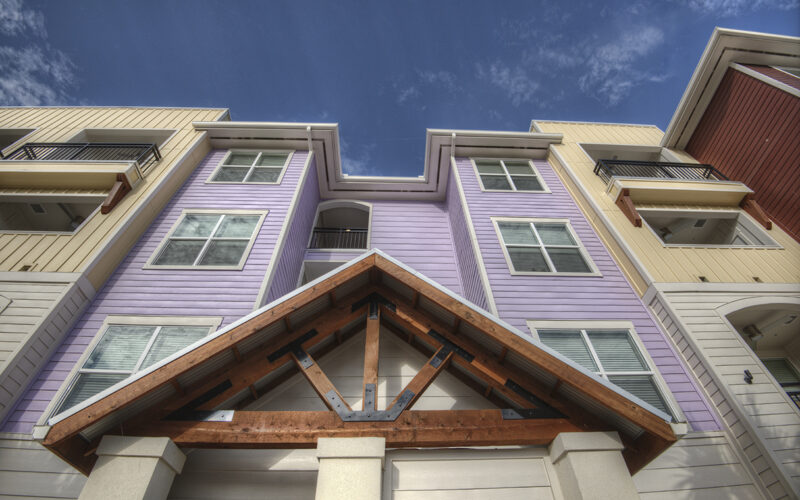Multifamily construction is a booming industry, and sometimes we feel like we need a minute to catch our breath. While working on our projects keeps us busy, it’s important for us to stop periodically and appreciate incredible feats of architecture.
The buildings that make the cut meet the following criteria:
1) Innovative
2) Inspirational
3) Will make you ask yourself, “Wow, why didn’t I think of that?”
Heron Tower in London, United Kingdom
At 755 feet tall with 46 stories, Heron Tower houses an 18,492-gallon aquarium in the atrium that is stocked with 1,200 tropical fish of 67 species. The tower features environmentally-friendly aspects such as photovoltaic cells for electricity generation. The triple-skin glazed façade and the photovoltaic veil also acts as a solar shield and reduces heat absorption.
Air-handling plant forms are housed on levels 41 to 46 to handle heat recovery. The tower also has an ice storage facility and uses adiabatic cooling to reduce energy consumption.
Source: Designbuild-Network.com
Pearl River Tower in Guangzhou, China
The Pearl River Tower is considered to be the world’s greenest skyscraper. The building “integrates the use of top of the line sustainable technology, passive wind and solar design and innovative structural techniques to create a near zero energy building.”
As a south-facing tower, the building is able to take advantage of the sun and wind patterns of its surroundings and location. Funnel-style breaks in the façade channel wind to integrated internal wind turbines. Photovoltaic panels, coupled with energy from the turbines, keep the heating, ventilation and A/C systems energized. There are also motorized shutters on the façade of the building that rotate to keep the building cool and provide fresh air ventilation.
Source: inhabitat
Kezmarska hut in Slovakia’s High Tatras peaks
Proposed by the Czech studio Atelier 8000 as a facilities building in Slovakia’s High Tatras peaks, this giant cube appears to have landed on its side in the mountains. According to the designers, the “orientation of the structure would allow three sides of it to be visible from any given point around its perimeter.” Made up of photovoltaics, windows and aluminum panels, each surface presents a square grid arranged in a way that is designed to generate as much solar energy as possible and minimize the building’s carbon footprint.
Source: dezeen
The Lotus Building in Wujin, China
The Lotus Building was designed to act as a cultural anchor and civic landmark – establishing a symbolic commitment of the local government’s ambitions and future aspirations. The project has been designed to minimize energy usage – with over 2,500 geothermal piles driven through the base of the artificial lake.
From architecture and design firm Studio505:
The entire lake water mass, and ground beneath, is utilized to pre-cool (summer) and pre-warm (winter) the air conditioning systems for both the lotus and the two-story building beneath the lake. The project is also mixed mode and naturally ventilated and utilizes evaporative cooling from the lake surface to drive a thermal chimney within the main flower pod.
Source: Contemporist
Headquarters for the Pathé Foundation in Paris, France
Renzo Piano’s architecture firm was tasked with building an office for the Pathé Foundation in an incredibly tight space. They decided to construct a curved dome of a building that arches upward, “like a giant balloon armadillo squeezing its way through the streets of Paris.”
By replacing a rectangular structure with a sloping, round one, the team managed to create over 6,000 additional square feet of courtyard and ground space for the neighbors. As a result, the new Pathé Foundation could have transparent glass walls, and allow more natural sunlight to reach the ground floor. From the third floor upwards, where the neighboring façades start to creep closer together, perforated aluminum siding was used to cover the exterior to let guests see outward from within, while appearing opaque from the outside, creating the illusion of privacy.
Source: Wired

